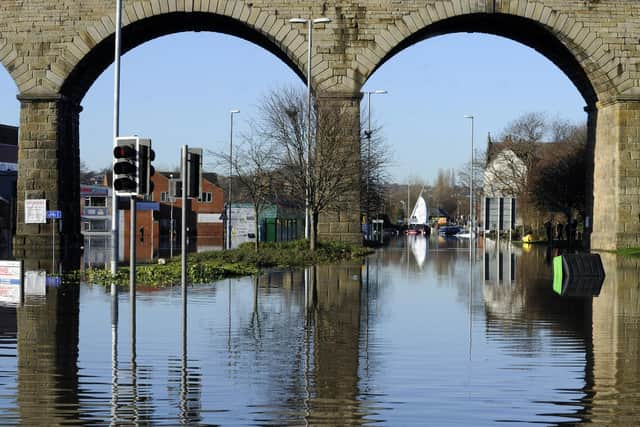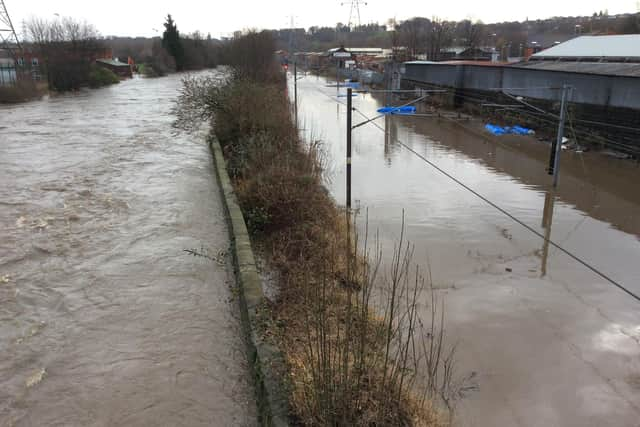Work starts on flood defences in Leeds to prevent railway lines from being battered in wet weather
and live on Freeview channel 276
Leeds City Council has started work on the second phase of its flood alleviation scheme, that aims to protect homes, businesses and infrastructure from the effects of flooding.
It comes after the Boxing Day floods in the city in 2015, that were caused by an almighty downpour and led to 3,355 properties being struck, including 672 businesses.
Advertisement
Hide AdAdvertisement
Hide AdIn the second phase of the council scheme, railway lines will be enforced with defences in areas that are “particularly prone” to flooding.


Construction has already started on one section of railway by Kirkstall Bridge to build defences on the right bank of the River Aire heading upstream. The defence will use an ‘earth embankment’ or steel sheet piled flood walls, which stretch for 1.4km. Flood walls are also under construction, extending up to Kirkstall Bridge.
The section of railway line connects Leeds with Shipley and Bradford and has flooded several times in the past, and currently remains at risk. The council has worked with Network Rail on the defences and plans keep disruption to a minimum.
Alongside the embankment and flood walls, 2.4 hectares of ‘landscape enhancements’ will be implemented in Kirkstall Meadows, including the creation of wetland scrapes. The sports pitches will be retained, and a new access ramp will be installed.
Advertisement
Hide AdAdvertisement
Hide AdCoun Helen Hayden, the executive member for sustainable development and infrastructure, said: “As the effects of climate change become more pronounced in the coming decades, it is important that we work with our partners to ensure that we build climate resilience across the region now.


“The works here showcase the great work that we have achieved in collaboration with Network Rail, delivering intricate solutions to build for the future without causing disruption.”
Mark Groom, Asset Protection Scheme Interface Manager at Network Rail, said: “I’m really pleased that work will begin on the second phase of this scheme this month. These works are vital to protect this section of railway line between Leeds and Shipley as it is particularly prone to flooding, ensuring it stays safe and reliable for years to come.
“We’ll continue to work with our partners at Leeds City Council to deliver this important project whilst making sure disruption to passengers is kept to a minimum.”
Advertisement
Hide AdAdvertisement
Hide AdGareth Farrier, Regional Director North at BAM Nuttall said: “Key to providing enhanced flood risk protection to the people of Leeds, their homes and businesses is ensuring vital infrastructure can continue to operate safely.
“Creating a solution which blends traditional construction techniques with natural flood management and biodiversity enhancements allows us a real opportunity to leave behind richer, more attractive habitat whilst improving flood resilience on the busy Leeds to Bradford line.
“Working closely with long term partner organisations to devise the best outcome for the people of Leeds, our collective efforts continue to deliver healthy, safe places to live, work and travel along in the Aire Corridor.”
When the entire second phase of the scheme is finished next year, it will reduce flood risk to a 0.5% probability of occurring in any given year, which is a 1-in-200-year level of flood protection, for 1,048 homes and 474 businesses.
Advertisement
Hide AdAdvertisement
Hide AdThis level of protection includes an allowance for climate change up to 2069 and will be effective for similar events to the boxing day floods in 2015, which costed Leeds an estimated £36.8m and the city region more than £500m.
